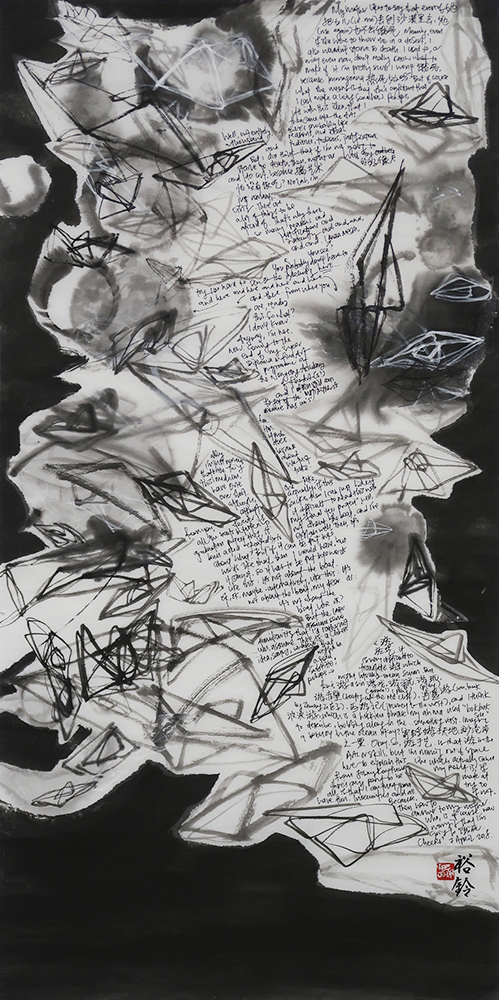It’s not about the Boat
Paper boats 《纸船》
Ink on paper
69 x 138 cm
It’s not about the Boat (INATBoat) (2018-ongoing) presents reflections on art and learning art at the Nanyang Academy of Fine Arts. With “Nanyang” literally referring to the “Southern Ocean”, the series builds upon the motif of a boat to explore conceptual and visual interrelations between Chinese calligraphy (or shufa) and ready-mades.
Whether INATBoat is read as an effort to extend the boundaries of Chinese ink practice which has been a multidisciplinary practice[1] to include Western medium, or to subsume Chinese ink under Western narratives as one installation work or a communal, performative work, is not so important as it is to reflect the multiplicities that is fundamental to every aspect of modern art making and living.
It is resultant of a research approach “翫” (read and henceforth referred to as “wan”). 翫 is the traditional Chinese character for “play” (玩) that combines the grapheme for learning (习) and play (玩), referring to a definition of play which is to play through practice and learning, akin to experimenting. This approach is elaborated in Lin Yutang’s The Enjoyment of Culture which argues that “art is creation and recreation” [2] and existentialist and humanist Albert Camus’s proposal in The Myth of Sisyphus for artistic activity to be taken as one of the key attitudes to face the absurd.[3]
[1] Especially since the Sung Dynasty, in combining poetry, calligraphy, drawings, and seal. The viewing of art in a personal space is traditional for Chinese ink practitioners and audiences, who have always been encouraged to regard the practice as part of one’s lifestyle, which is encapsulated in one’s art.
[2] Lin Yutang. (1937). The Importance of Living. New York: The John day Company, Inc. p. 362-395. This chapter of Lin’s book recommends approaches and attitudes towards the creation of art and literary, and how one might find enjoyment in its pursuit.
[3] Flynn, Thomas. R. (2006). Existentialism: A Very Short Introduction. Oxford University Press. P. 5-8. “It is into this world of limited and relative observation and assessment that the existentialist enters with his/her drive to ‘personalise’ the most impersonal phenomena in our lives… it is a defining feature of existentialist thought and method that they carry an ontological significance as well. They articulate our ways of existing and provide access to the meaning and direction of our lives.”
Full installation of It’s not about the Boat [the artist is in residence] Dimensions variable.
![Installation [the artist is in residence], 2018](https://images.squarespace-cdn.com/content/v1/52491b73e4b05a24380f1ef8/1571377481462-MLUSUQ63NYE4YXHR2P0F/INATBoat+cropped+pano.jpg)

![[Floating a paper boat]](https://images.squarespace-cdn.com/content/v1/52491b73e4b05a24380f1ef8/1571371146807-6HH7M2BSOP4KHVQ4QANO/IMG_1897+b.jpg)











